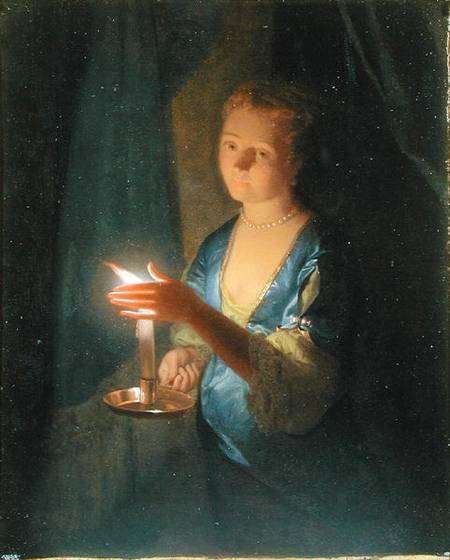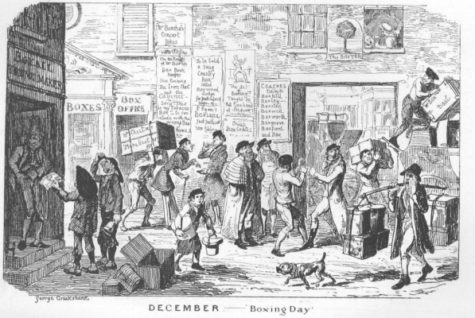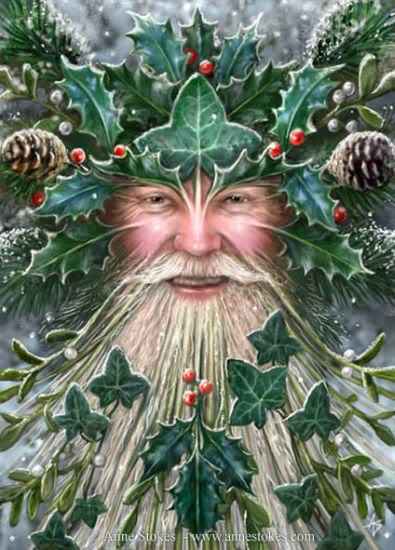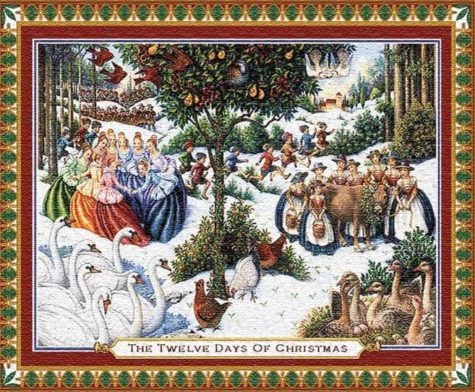Monthly Archives: December 2016
The New Year represents a new beginning in every way. Clearing up unfinished business, of whatever kind, is a good notion, and blowing away the cobwebs from the old year that has passed is no bad thing either. In parts of Scotland this was accomplished by the juniper and water rite.
After sunset on New Year’s Eve, people went out to gather branches of juniper and buckets of fresh water from a well or stream. The branches were then placed by the fire to dry out. In the morning the head of the household took a first drink of the water and then went around the house sprinkling everyone with a few drops.
This done, all doors and windows were closed tight and the branches of dried juniper were set alight and taken through the house until everything was thoroughly fumigated. This almost certainly dates back to a very old rite in which the sacred juniper was burned at fireplaces to ensure the gifts of the New Year were properly celebrated.
We can still do this today, since there are numerous kinds of incense made from juniper, or if we are adventurous enough we can make our own. Taken through the house this leaves a pleasant aroma and gives us a sense of new beginnings.
From The Silver Bough we have this nice little New Year’s Eve folk tradition::
The house received a mini spring-cleaning. Slops and ashes, which are usually removed in the morning, are carried out. Debts must be paid, borrowed articles returned, stockings darned, tears mended, clocks wound up, musical instruments tuned, pictures hung straight; brass and silver must be glittering; fresh linen must be put on the beds. Even in the slummiest houses… brooms and pails, soap, polishing rags and darning-needles emerge from neglected cupboards and drawers, and the bairns receive a thorough scrubbing in honor of the New Year.
New Year’s Eve is traditionally a time for assessing the past twelve months and for looking ahead to the New Year. Numerous customs are still retained in Europe and the United States, including the idea of kindling a new light from the old. This can be achieved in a number of ways, including the following simple ceremony.
At a few minutes to midnight, put out all of your lights except for a single candle or a lantern (it’s important that the light be a living one rather than electric). Send someone outside (traditionally it is someone who has dark hair) with the light, which they must guard and protect from the weather. As the clock strikes twelve have that person knock on the door. Open it and welcome them in with some form of ceremonial greeting, such as:
Welcome to the light of the New Year
And welcome he/she who brings it here.
Go around the house with the candle and relight all the lights you put out. If these can be candles so much the better, but don’t burn the house down In Scotland this custom is known as “First Footing,” and the person who first puts his or her foot across the door is the one who brings fortune to the whole household. Often someone in the house arranges with a friend to come to the house at the exact time carrying a gift – called a handsel in Scotland and consisting of a lump of coal, or a bottle of whiskey – something that will ensure that more gifts come throughout the next twelve months.
Source: The Winter Solstice
First Footing Lore:
 The first person to enter your home after the stroke of midnight on New Year’s Eve will influence the year you’re about to have.
The first person to enter your home after the stroke of midnight on New Year’s Eve will influence the year you’re about to have.
Ideally, he should be dark-haired, tall, and good-looking, and it would be even better if he came bearing certain small gifts such as a lump of coal, a silver coin, a bit of bread, a sprig of evergreen, and some salt.
Blonde and redhead first footers bring bad luck, and female first footers should be shooed away before they bring disaster down on the household. Aim a gun at them if you have to, but don’t let them near your door before a man crosses the threshold.
The first footer (sometimes called the “Lucky Bird”) should knock and be let in rather than unceremoniously use a key, even if he is one of the householders.
After greeting those in the house and dropping off whatever small tokens of luck he has brought with him, he should make his way through the house and leave by a different door than the one through which he entered.
No one should leave the premises before the first footer arrives – the first traffic across the threshold must be headed in rather than striking out.
First footers must not be cross-eyed or have flat feet or eyebrows that meet in the middle.
Nothing prevents the cagey householder from stationing a dark-haired man outside the home just before midnight to ensure the speedy arrival of a suitable first footer as soon as the chimes sound.
If one of the partygoers is recruited for this purpose, impress upon him the need to slip out quietly just prior to the witching hour.
Source: Snopes.com
This holiday, celebrated on Dec 26, derives from the Old English custom of giving Christmas “boxes” to tradesmen, postmen, and servants. The original boxes were usually made of earthenware and contained money, which could be retrieved only by breaking the boxes open. These days, a gift of money is usually contained in a greeting card and given before the holiday. Where celebrated (Great Britain, Canada, and Australia), Boxing Day is welcomed as a quiet day of recuperation from the season’s hectic festivities. It is also the biggest day of the year for soccer playoffs.
Source: Almanac.com
Magical Attributes: Generosity, goodwill, empathy, service, and depending on which goodies you put into the dough other blessings will abound.
- 1/2 teaspoon saffron
- 3 tablespoons hot water
- 2 envelopes active dry yeast
- 1/4 cup warm water (105-115 degrees F)
- 1/4 sup sugar, plus 1/4 teaspoon
- 1 cup milk
- 1/3 cup butter
- 1 teaspoon salt
- 1 egg
- 4 cups sifted flour
- 2 tablespoons melted butter
- 1 1/2 cups of any combination of currents, candied fruits, nuts, raisins, chocolate chips,
Soak the saffron in the hot water for 1 1/2 hours. In a large bowl, dissolve the yeast and 1/4 teaspoon sugar in the warm water. Mix the milk, remaining sugar, butter and salt; cool. Add the egg, milk mixture and saffron to the yeast, beat until smooth.
Sprinkle your combination of goodies with two teaspoons of the flour. Mix until evenly coated. Mix the rest of the flour with the yeast mixture…fold in your combination of goodies and put on a well floured surface and kneed until smooth.
Place in greased bowl, turn once, let rise in warm place until doubled, about an hour.
Preheat oven to 400 degrees F. Knead dough twice.
Next it’s your choice…divide into 24 pieces and roll into small buns…or…devide in half and bake as loaves or roll into log shape and bake…cover and let rise for 30 minutes. Bake for about 10 minutes, reduce to 350 degrees and bake another 10 minutes..brush the tops with butter and bake 5 more minutes…always check to be sure it’s cooking properly as depending on which way you decide to make it it may take a little longer to cook.
author unknown
- 1 1/2 cups flour
- 2/3 cup sugar
- 2 eggs
- 1/2 teaspoon anise seed
Beat the eggs until lemon color. Add the sugar. Beat. Grind up the anise seed with a mortar and pestle. Sift in the flour and add the ground anise seed. Drop by spoonful or use a (cookie press) onto a cookie sheet. Refrigerate overnight. Bake in a 300 degree oven for 20 to 30 minutes (until cookies are firm, but not brown.) Store in a tin for several days before serving.
Source: Pathwalkers.net
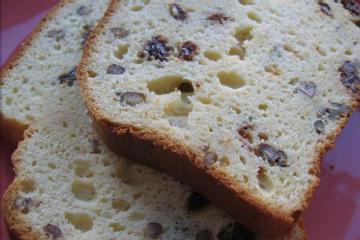
A festive, sweet, and light-colored bread, celebrating the return of the Sun, and the promise of next season’s harvest.
- 4 cups all-purpose, unbleached flour
- 1/2 cup sugar
- 1 tsp. salt
- 3 tbs. butter
- 1 6 oz. packet Sun Maid Sun Ripened Dried Fruit Bits
- Equal amount chopped pecans
- 1 1/2 cup egg nog
- 1 pkg. dry yeast, in 1/2 cup warm water
Warm everything to room temperature. Pitch yeast in warm water, with a pinch of sugar. Mix flour, sugar, and salt; cut in softened butter. Mix in fruit and nuts. When yeast is good and frothy, mix in egg nog and yeast mixture and knead, adding flour as necessary. Let rise about an hour, punch down dough, form into a ball, and let rise again; preheat oven to 350 degrees.
Bake approximately 30-45 minutes until done.
Also known as Mithras (for the Persian Sun God), Saturnalia (for the Roman God of sowing and husbandry) and The Great Day of the Cauldron (from Druid Legend). It is the celebration of the return, or rebirth, of the Sun God, the Lord of Life. The celebrations were traditionally performed with the utmost solemnity, yet also with the highest rejoicing, for they resolve the paradox of Death and Rebirth. It represents the redemption of the world from Death and Darkness, as such it is a celebration of hope and joy amidst the gloom of winter.
The word Yule can be traced to the Celtic word `Hioul” which means wheel. This festival is an important point in the turning of the wheel of the year. Wreaths were made to symbolize this wheel, combining solar significance with tree-god significance. In ancient times Celts venerated trees as earthly representatives of the Gods, and it was felt that nothing short of the sacrifice of a mighty tree-god would cause the receding sun to take pity on them and return.
The burning of the Yule log was thought, through sympathetic magick, to increase the brightness and strength of the Sun, and would therefore bring good luck. Passersby would tip their hat or nod in salutation to the log. It is traditional to cut the log from oak or from a slow-burning fruit tree. The fire was lit from a piece of the previous years Yule log, which had been saved for this purpose. It was believed that this piece of the old log was a charm against fire, because it would refuse to burn until it was time to light its successor. A wish was also made while pouring wine over the burning log. It was believed to be bad luck if the log burned out before the 12 days of Yuletide were over. The ashes from the fire were spread in the fields to bring fertility to the next crop.
The Wassail bowl is another favored part of Yule celebrations. A large bowl or pot was filled with wassail, a mixture of cider and spices, and warmed over the Yule fire. The meaning of the word wassail is to be `hale or hearty’, and was the reason for the many toasts and salutations made from the bowl. It was also common for a procession to go to the nearest orchard and wassail the trees, thus blessing them and encouraging them to bear a good yield in the coming season. Libations of wassail were also poured over the roots of the trees, and cider drenched cakes were left in the forks of the older trees as an offering to the trees spirit.
Mistletoe is a regeneration symbol, considered to be the Essence of Life due to the resemblance of the juice of the berries to male semen. It was often gathered at this time. Evergreen boughs are also symbols of renewal. Evergreens were decorated to show honor to the tree spirits. The lights on modern trees were the candles of old, and represent the newly born sun god. Trees were not cut down and brought indoors.
The Sacred Seed of Life, having been nurtured by the foster mother Tailltiu, sprang forth from her breast, and was born. As the Wyrrd had foretold, here was the Child of Promise, son of the Gods and of the Earth. This baby was the Sun God, born in the Rule of Darkness, by the magick of the Gods. He was destined to grow in strength and knowledge. It was his task to bring back life and warmth to the land, and to wrest the power from the Lord of Darkness. To appease Cernunnos, who is at the peak of his strength, the people made sacrifices of roasted boar. To distract Callieach, the Wise Ones, or Witches invoked her to teach them of her mysteries. To aid the new-born Sun God the Celts felled a giant oak tree, and burned the log as a sacrifice, that the sun would gain strength from it, and grow.
Despite the powers of Cernunnos and Cailleach, the signs of new life were still upon the land. The sacred seeds which had fallen onto the barren branches of the winter-dead trees had come to life, and thus became the Mistletoe, which could be seen hanging from the oaks in the forests. Upon the land these sacred seeds had grown into the sweet smelling evergreens, and thus they were decreed to be a part of the celebration.
In honor of this magickal birth the people decorated the evergreens with candles and other symbols of life. The Druids told of Hu-Gadarn, the first druid, who had fled from the Atlalntean flood with his family on this day on the Ark, “The Great Cauldron” in which they brought the Essence of Life, and the knowledge of magick into the world. They would also tell tales of the Killing of the Wren, and of the Battle between the Oak King and the Holly King. Throughout the land the people rejoiced, and there was light in the midst of the darkness.
Blessed Be
~Lady Galadriel
From the earliest times the twelve days have been regarded as a time when supernatural events can easily happen, when the dead are close at hand and might often be seen.
One reads of the Wild Hunt, or the Fairy Host riding across the lands of Britain and Germany in particular, led by characters such as King Arthur, Woden, and Arawn, the Celtic god of the Underworld. In Ireland these supernatural hunters are known as the Yule Host, and in common with all these bands they are believed to gather up wandering souls and carry them away to the Otherworld.
The Twelve Days of Christmas stand outside of “ordinary time,” and celebrations focus on the return of the sun and a continuation of the eternal cycle of life.
The days from Christmas Eve on December 24th to Epiphany on the 6th of January (actually fourteen days as the first and last are not included in the twelve) really exist out of linear time. They are, in a sense, the fruit of the past year, one day for each month that has passed. Over the centuries the dates have changed – sometimes radically.
Here’s a list of commonly accepted dates and traditions:
- Day 0 – Dec 24 – Christmas Eve
- Day 1 – Dec 25 – Christmas Day, Birthday of Jesus, Mithras, Attis, Aion, Horus, Dionysus, and The Unconquered Sun.
- Day 2 – Dec 26 – St Stephen’s Day, Boxing Day, Day of the Wren
- Day 3 – Dec 27 – Mother Night, St John’s Day
- Day 4 – Dec 28 – Holy Innocent’s Day, Childremass, Dyzymas Day
- Day 5 – Dec 29 – Feast of Fools
- Day 6 – Dec 30 – Bringing in the Boar
- Day 7 – Dec 31 – New Year’s Eve, Hogmanay
- Day 8 – Jan 1 – New Year’s Day,
- Day 9 – Jan 2 – The Kalends of January
- Day 10: – Jan 3 – Snow Day
- Day 11 – Jan 4 – Evergreen Day
- Day 12 – Jan 5 – Twelfth Night
- Day 13 – Jan 6 – Epiphany,
When researching lore and magicks for the Twelve Days of Christmas I found a lot of disagreement as to the dates. So, from Wikipedia we have this explanation and additional information:
The Twelve Days of Christmas are the festive days beginning Christmas Day (25 December). This period is also known as Christmastide and Twelvetide. The Twelfth Night of Christmas is always on the evening of 5 January, but the Twelfth Day can either precede or follow the Twelfth Night according to which Christian tradition is followed. Twelfth Night is followed by the Feast of the Epiphany on 6 January. In some traditions, the first day of Epiphany (6 January) and the twelfth day of Christmas overlap.
Over the centuries, differing churches and sects of Christianity have changed the actual traditions, time frame and their interpretations. St. Stephen’s Day (or Boxing Day), for example, is 26 December in the Western Church and 27 December in the Eastern Church.Boxing Day, on December 26, is observed as a legal holiday in parts of the Commonwealth of Nations. 28 December is Childermas or the Feast of the Innocents.
Currently, the twelve days and nights are celebrated in widely varying ways around the world. For example, some give gifts only on Christmas Day, some only on Twelfth Night, and some each of the twelve nights.
In England in the Middle Ages, this period was one of continuous feasting and merrymaking, which climaxed on Twelfth Night, the traditional end of the Christmas season. Continue reading
The Geminids is the king of the meteor showers. It is considered by many to be the best shower in the heavens, producing up to 120 multicolored meteors per hour at its peak. It is produced by debris left behind by an asteroid known as 3200 Phaethon, which was discovered in 1982.
The shower runs annually from December 7-17. It peaks this year on the night of the 13th and morning of the 14th. Best viewing will be from a dark location after midnight. Meteors will radiate from the constellation Gemini, but can appear anywhere in the sky.



